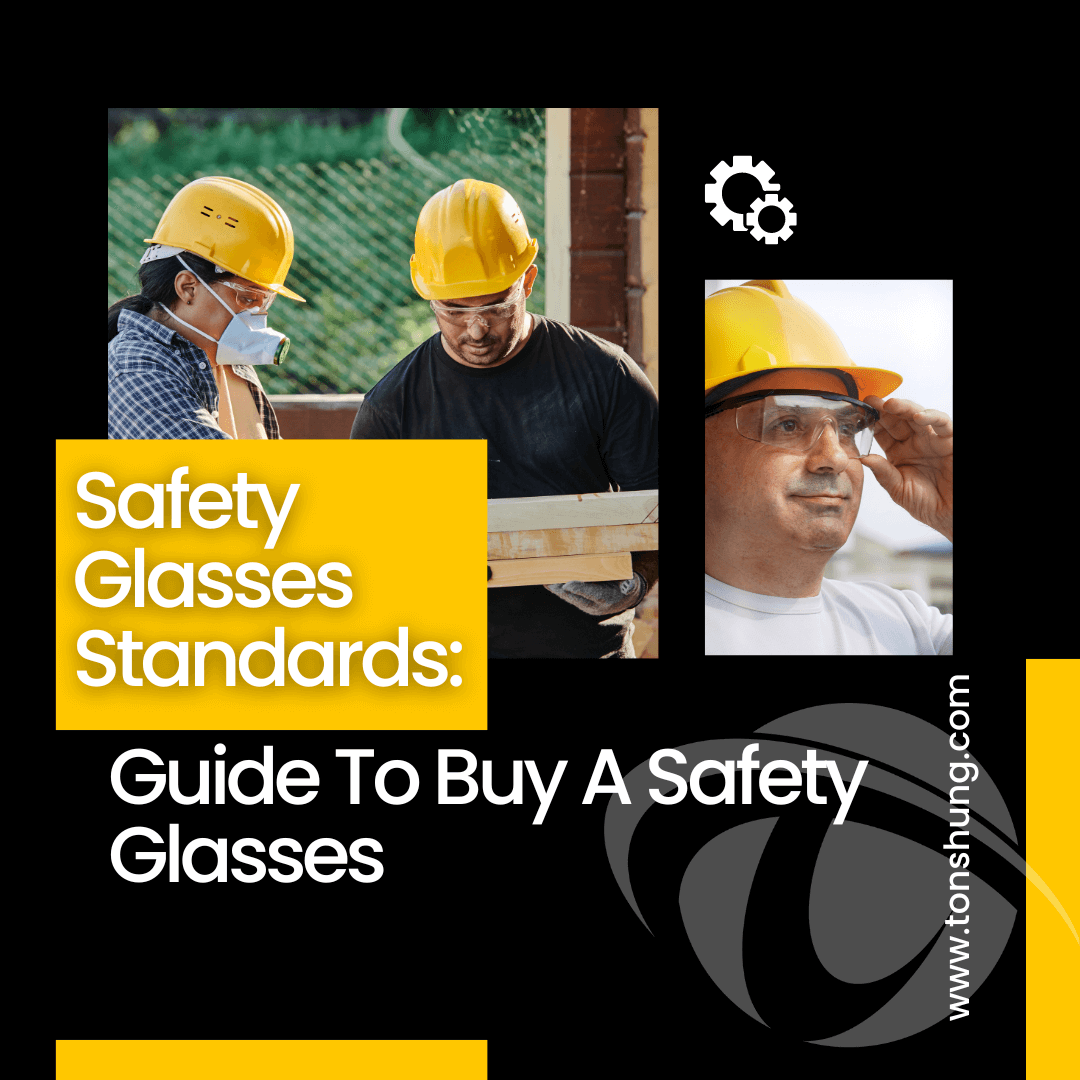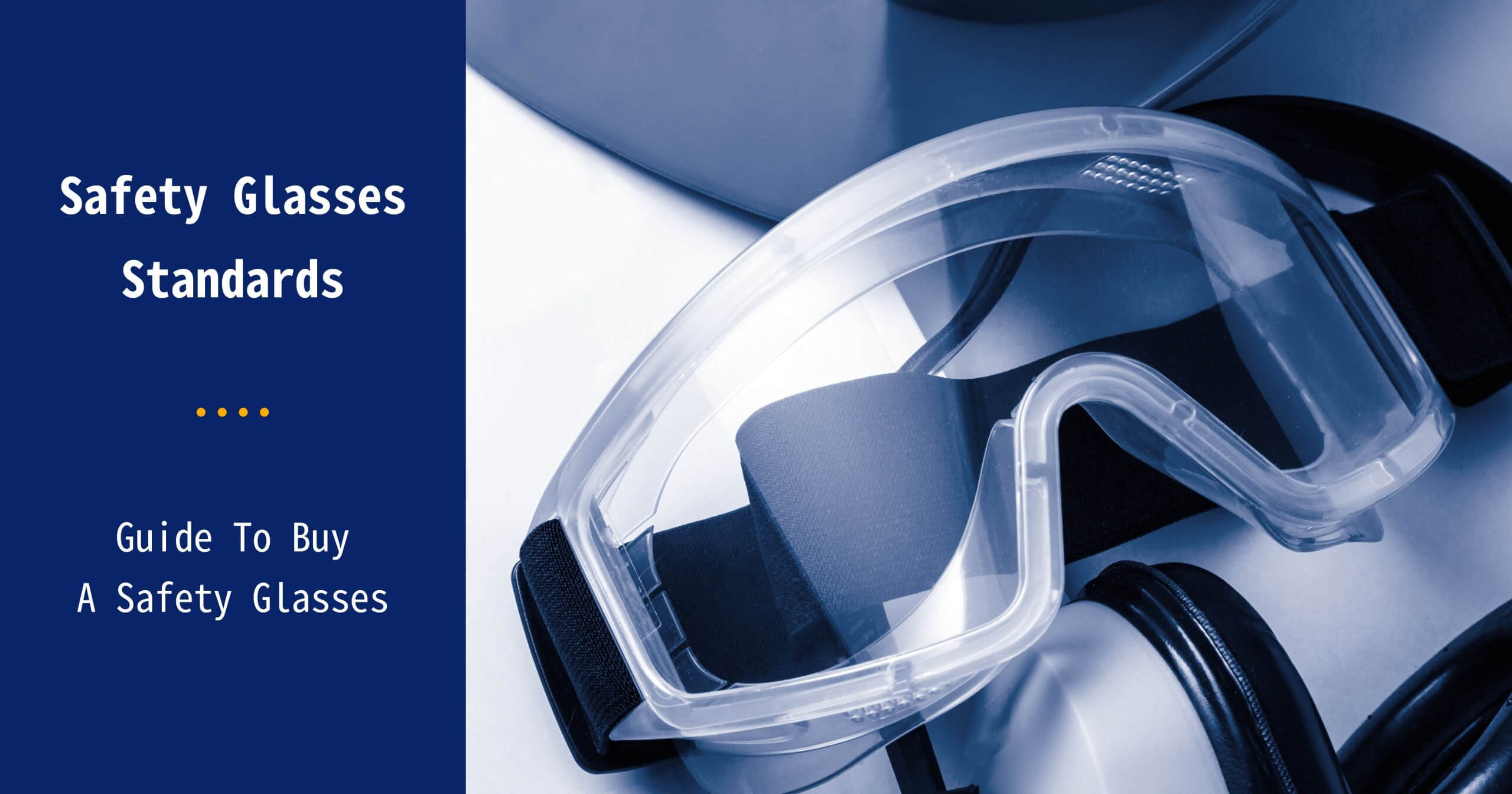Two primary safety glasses standards
According to The National Institute for Occupational Safety and Health reports that 2,000 Americans suffer from an occupational eye injury every day, but 90 percent of these injuries can be avoided simply by wearing the correct safety eyewear.
However, when one wants to choose between several pairs of safety glasses and goggles, the multiple standards and specifications can be quite confusing. Here is a summary of the two bigger common standards for the European and Northern American markets.
ANSI: safety glasses standards for Northern American market
ANSI standards for safety eyewear
The general standard for protective eyewear in the United States is OSHA’s ANSI Z87.1. The standard sets forth numerous criteria related to the general requirements, selection, care, and use of protectors to minimize the occurrence and severity of injuries. To be compliant with ANSI Z87.1 standards, safety glasses must be tested for non-impact-rated or impact-rated lenses and frames, as well as exposure to non-ionizing radiation and chemicals. Safety glasses are also tested for ignition and corrosion. In addition to these tests, safety glasses must meet a minimum area of physical coverage to protect the wearer’s eyes.
The easiest way to determine whether eyeglasses are ANSI Z87.1 compliant is to look for markings on the lenses and frame of the pair. It is mandatory for all protectors (safety glasses) to bear permanent and legible markings in specified locations.
There have two main categories of safety glasses which show “Z87” or the manufacturer’s mark with a “+” stamped on the lens or frame. The difference between them is “Z87” marking is comply with basic impact, and “+” is marking is comply with high impact requirements. With “Z87” marking to ensure that all protectors possess a minimum impact resistance. This can be confirmed through the ball drop test.
- Ball drop test: a 25.4 mm (1.0 in.) diameter steel ball projectile, weighing 68 g (2.4 oz), through a height of 127 cm (50 in.) tube contact to the headform.
The “+” marking is to determine a protector which has the capability of resisting impact from high velocity, low mass projectiles.
- The high-impact test: The protectors should be against high-speed particles, withstand the impact of a 6 mm diameter steel ball of 0,86 g at velocities from 45.7 to 91.4 m/s (150 to 300 ft/s) at different angles.
For further information about the Z87 standard, please read about it down below.
Learn More: What does Z87 mean on safety glasses?
EN166: safety glasses standards for Europe market
Europe standards for safety eyewear
The safety standard for Europe is EN166 (Individual Eye Protection). This standard specifies, such as Z87 the compulsory marking of the temples (or mask for goggles) and the lenses. This standard (among others) specifies the tests of the mechanical resistance of the equipment. This standard establishes several criteria for safety eyewear, such as the field of use, mechanical resistance, and optical class. This standard also guarantees that each eyewear offers a minimum resistance against common hazards: aging by light, exposure to high temperatures, fall on hard ground, corrosion.
The EN 166 standard is applicable to all types of personal eye protection used against the various risks likely to damage the eye or impair vision, except for nuclear radiation, X-rays, laser emissions, and infrared radiation (IR) emitted by low temperature sources. It defines the basic features that all protective eyewear must provide, both in terms of minimum protection and in terms of optical qualities.
There has three markings suggest to check before choosing the safety protectors, which comply with minimum requirements, optical classes, and high impact level.
First, the “EN166” marking is mean that the protector meets the minimum protection requirement including the Minimum Robustness.
- Robustness: A 22 mm nominal diameter steel ball of 43 g minimum mass falling from 1.27 m strikes the ocular within a 5 mm radius from the center of the support tube. This height will provide an impact speed of approximately 5,1 m/s.
Second, the marking “1,2, or 3” based on the overall optical quality to class the optical classes from 1 to 3 as below.
- Optical class
Class 1 Continuous works (best quality)
Class 2 Intermittent works
Class 3 Occasional works
Third, the marking “F” or “B” to ensure a protector has the capability of resisting impact against high-speed particles.
- The high-impact test: The protectors should withstand the impact of a 6 mm diameter steel ball of 0,86 g at velocities from 45.7 to 120 m/s (150 to 393.7 ft/s) at different angles.
45m/s Low energy impact (F) for spectacles and up to Medium energy impact (B)120 for goggles
Learn More: What Does EN166 Mean? European Standard for Safety Glasses?
Our manufacturing capacity can satisfy two primary safety glasses standards
The choice of personal protective equipment for the eyes and/or face depends on the analysis of the risks to which the workers are exposed and on the analysis of the hazards presented by the workstation, the tasks to be executed, and the work environment.
Tonshung technologies propose a wide range of protective eyewear, that you can choose from OEM to ODM. We propose multiple products which match all the standards cited above, and we will produce the protective eyewear you need to match your requirements. Choose the right protectors, make our life better.
For any information, please contact us or use info@tonshung.com .


